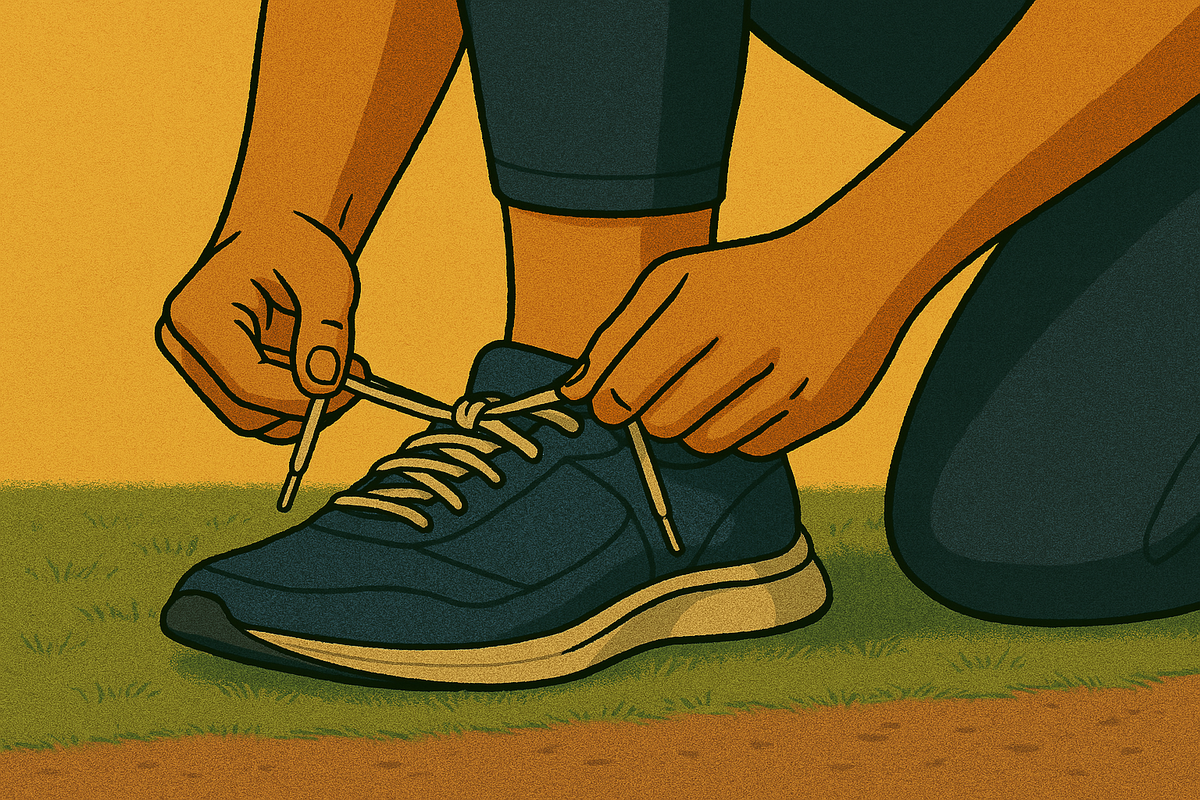
Have you ever wondered if those expensive running shoes are actually worth it? Or whether high-top basketball shoes really protect your ankles? The shoes you wear during exercise impact not just your comfort, but also your performance and injury risk—sometimes in surprising ways.
The Evolution of Athletic Footwear
Athletic shoes have come a long way from the dress shoe-like running footwear of 100 years ago. The running boom of the 1970s triggered major innovations as manufacturers scrambled to address a surge in running injuries.
Over the decades, four main approaches to footwear design have emerged:
- Pronation control (1971-2009): Aimed to correct “abnormal” foot motion
- Impact force modification (1971-2010): Focused on reducing impact forces
- Minimalist movement (2004-2011): Promoted barefoot-style running
- Current approaches: Emphasize individual comfort and natural movement patterns
While these design philosophies have produced increasingly sophisticated shoes, research shows that finding the right footwear is more personal than previously thought.
Key Footwear Components and How They Affect You
Understanding the basic parts of athletic shoes can help you make smarter choices for your specific needs:
The Outsole: Balancing Grip and Safety
The outsole is the bottom layer that contacts the ground. More traction improves performance by allowing you to push off with greater force during cutting movements, jumping, and sprinting. However, there’s a trade-off—higher traction also increases stress on your lower limbs, potentially raising injury risk.
What this means for you: Choose shoes with appropriate traction for your activity and surface. Court sports need good grip, but excessive traction on artificial turf could increase knee injury risk.
The Upper: Does Ankle Support Really Work?
The upper includes the material covering your foot, along with features like the heel counter (the rigid cup around your heel) and collar height (how high the shoe extends above your ankle).
Contrary to popular belief, research questions whether high-top shoes actually prevent ankle sprains. Studies have found that the movement of the shoe doesn’t necessarily match the movement of your ankle inside. Some evidence suggests high-tops may even increase knee injury risk by altering how forces travel up your leg.
What this means for you: If you need ankle stability, don’t rely solely on high-top shoes. Consider ankle taping or bracing for additional support, especially if you have a history of sprains.
The Midsole: Where Innovation Happens
The midsole is where most modern footwear technology is found, including:
Cushioning
The latest cushioning materials like polyether block amide (PEBA) have revolutionized athletic footwear by providing greater energy return while remaining lightweight. This technology has contributed to recent record-breaking performances in distance running.
What this means for you: More cushioning feels comfortable but adds weight, increasing the energy cost of movement. Consider your priorities—comfort versus performance.
Stability Features
Traditional stability shoes use a medial post (firmer material on the inner side) to control pronation. While these features do limit pronation, research increasingly questions whether controlling pronation actually reduces injury risk.
What this means for you: Don’t automatically assume you need stability shoes if you have flat feet. Some studies suggest people with flat feet may do just fine—or even better—in neutral shoes.
Longitudinal Bending Stiffness
This technical term refers to how difficult it is to bend the shoe from heel to toe. Stiffer shoes can enhance performance in sprinting, jumping, and cutting movements by storing and returning energy, similar to a spring.
What this means for you: The optimal stiffness varies based on your body weight, strength, and running speed. Heavier, stronger athletes often benefit from stiffer shoes.
Heel-to-Toe Drop
This measurement indicates the height difference between the heel and forefoot of the shoe. Traditional running shoes have 8-12mm drops, while minimalist shoes are closer to zero.
What this means for you: Lower drops tend to promote midfoot or forefoot striking while running, which shifts stress from your knees to your ankles and feet. If you have knee pain, a lower drop might help. For Achilles or foot issues, a higher drop could provide relief.
The Comfort Filter: Your Built-in Shoe Expert
With all these technical considerations, how do you choose? Research suggests your body already knows the answer. The “comfort filter paradigm” proposes that the shoe that feels most comfortable to you is likely the one that will help you avoid injury.
Your body instinctively seeks movement patterns that feel natural and efficient. When a shoe allows these preferred movements, it feels comfortable. When it disrupts your natural mechanics, discomfort signals potential problems.
Finding Your Perfect Fit
When selecting athletic footwear:
- Prioritize comfort above marketing claims or trends
- Consider your individual needs, including injury history and activity type
- Remember that footwear is just one factor in performance and injury prevention—training errors cause over 60% of overuse running injuries
While shoe technology continues to advance, listening to your body remains your best guide. The perfect shoe allows you to move naturally while providing the specific features you need for your chosen activity.
This article is based on research by Jeff H. Mettler, Ph.D., published in ACSM’s Health & Fitness Journal, Volume 29, Number 1.
